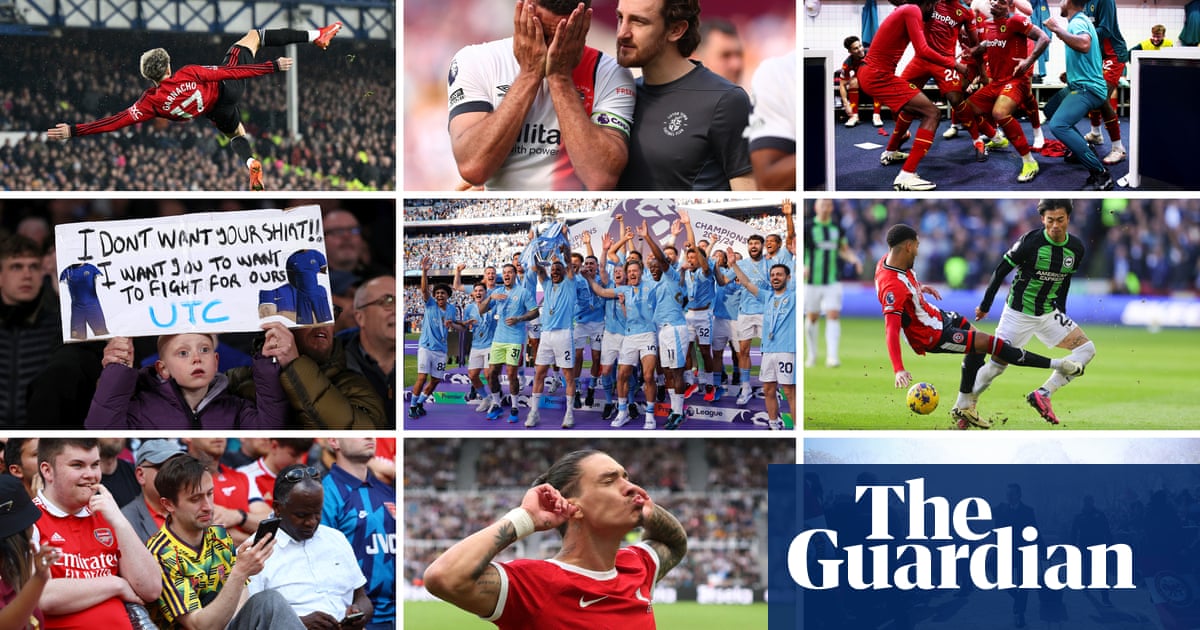
Tactics are always contingent, never discreet. No manager can ever casually decide how he will play and only then turn to his squad and decide how best to array his resources within the system he has selected, before finally paying attention to the situation and the opposition. Everything is inter‑related. As Barney Ronay observed last week, the Premier League has never seemed so stratified and that, inevitably, has had an impact on how teams play.
As with so much in football, the issue is one of degree. Since Herbert Chapman first recognized the value of counterattacking with Northampton Town in the first decade of the 20th century, there have been sides who sought to make their opposition do the bulk of the attacking.
This is one of the great virtues of football as a sport: the better side usually win but a weaker team can overcome a stronger one by sitting back, defending, allowing them possession and striking on the break. For one team to have almost complete domination of the ball used to be the preserve of mismatched cup ties, when a lower-league side would go into the bunker, look to survive and hope that if they were exceptionally lucky they might launch a guerrilla sortie that could bring an implausible victory.
But as the gulf grows between rich and poor (or, more accurately, relatively poor, given that the vast majority of Premier League sides will be in the top 30 of Deloitte’s list of the world’s richest clubs by revenue), so the dynamic that was once characteristic of the FA Cup’s early rounds has become common in the Premier League.
In the first three seasons that Opta collected data, between 2003-04 and 2005-06, there were only three games in which one side had 70% or more of the ball. That figure rose gradually to reach 36 in 2016-17. This past season, there were 63 instances.
To an extent, that is a matter of choice. Under Pep Guardiola Manchester City play a style of football that, through its focus on positioning and generating passing options, ensures a high level of possession. City won the league having had far more possession and completed far more passes than any team before.
How possible that would have been without the extraordinary wealth available to Guardiola is open to question, although there have been plenty of astonishingly rich sides before who have not played football like that. City’s football was the result of philosophy facilitated by wealth.
Not surprisingly, City were the biggest contributors to that list of 63 games. They had more than 70 percent possession on 26 occasions, including at home against Swansea when they set a Premier League record by registering 82.95 percent. They also had the second-most possession in an individual game, against Everton. But what is perhaps most striking is the game that is third on the list. On 10 March Huddersfield registered 81.2 percent possession against Swansea. Admittedly, Carlos Carvalhal’s side had Jordan Ayew sent off after 11 minutes, but still, the figures are extreme.
Swansea, in fact, were involved in seven of the 63 games (four of them under Carvalhal), winning twice and drawing twice, always on the low possession side, the legacy of their Brendan Rodgers years thoroughly shredded.
Jürgen Klopp describes that hedgehog tactic as being like hoping to win the lottery, limiting the number of chances in the game and hoping that the opportunities to which you restrict your opponent are few enough and hard enough that they don’t take any of them, but for a certain level of club perhaps that is the most effective way if playing. After all, if Swansea had replicated the points return they achieved in those seven games in which they had less than 30 percent possession across the season, they would have accumulated 43 points and stayed up comfortably.
The implication is that the explosion of games of unbalanced possession is driven not merely by the bigger team wanting the ball, but by the smaller team rejecting it. It is as though the example of Guardiola’s Barcelona a decade ago not merely encouraged elite sides to try to dominate possession, but the measures taken to combat that team, most notably by José Mourinho’s Internazionale in that 2010 Champions League semi-final, legitimized the notion of playing without the ball.
The result was that Chelsea’s bizarre performance at the Etihad Stadium, when they essentially sat back and watched City knock the ball around. Chelsea in that game clearly embraced their role; it was not just City being good. There has been a shift in mentality that has gone hand-in-hand with the increasing financial inequality.
That has long-term implications: what has an appeal in a one-off cup tie may not be so intriguing if a sixth of all Premier League games now have the shape of the sport of handball, midfields vanishing as one team camps around their own box and the other tries to break it down.
When a league prides itself on – and has been marketed as – being an environment in which everybody can beat everybody, full of midfield to-and-fro, a culture in which a number of clubs go into games accepting that the only way they can compete is by not competing – must be a major concern. The march of the elite away from the rest is creating tensions the game in its present form may not be able to sustain.The Guardian Sport












